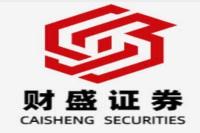Revolutionizing Hearing: A Deep Dive into China's Artificial Cochlea & Vascular Stent Procurement
Meta Description: China's medical device market undergoes a seismic shift with the concentrated procurement of artificial cochlea and vascular stents. This in-depth analysis reveals pricing strategies, market implications, and the future of hearing healthcare access. Keywords: Artificial Cochlea, Vascular Stent, Concentrated Procurement, China Medical Device Market, Medical Technology, Hearing Healthcare, Pricing Strategy, Competitive Bidding, Healthcare Access.
Imagine a world where the simple joy of hearing a loved one's voice, the chirping of birds, or the laughter of children is beyond reach. For millions, this is a harsh reality. But the tide is turning, thanks to groundbreaking advancements in medical technology. The recent concentrated procurement of artificial cochlea and vascular stents in China marks a pivotal moment, not just for the nation's healthcare system but for the global medical device landscape. This isn't just about numbers on a spreadsheet; it's about dramatically altering the lives of countless individuals and reshaping the future of accessible, high-quality healthcare. This comprehensive analysis delves into the specifics of the procurement event, unravels the complex pricing strategies employed by key players, and explores the broader implications for patients, manufacturers, and the future of innovation within China's burgeoning medical technology sector. We'll scrutinize the data, dissect the market dynamics, and offer insights gleaned from years of experience covering the intricacies of the Chinese healthcare market. Get ready to uncover the untold story behind these life-changing devices and the revolutionary shift they represent. This isn't just another news report; it's a deep dive into the human element of medical progress, revealing the hopes, challenges, and ultimately, the triumphs that define this critical moment in healthcare history. We'll explore the potential impact on patient access and affordability, shedding light on the intricate dance between market forces, regulatory frameworks, and the ultimate goal: improving the lives of individuals in need. So buckle up and prepare for a journey into the heart of this transformative event, where numbers meet humanity, and technology meets hope.
Artificial Cochlea and Vascular Stent Pricing: A Competitive Landscape
The recent concentrated procurement event in Tianjin unveiled a fascinating snapshot of the competitive landscape for artificial cochlea and vascular stents within China. The bids, as reported by 21st Century Business Herald, showcased a notable range in pricing, highlighting the diverse strategies employed by leading manufacturers. Med-el's bid, for example, presented a relatively lower cost option at ¥31,666 for the implant and ¥15,000 for the speech processor – a strategy likely aimed at gaining market share through aggressive pricing. In contrast, Oticon Medical and Nueron (using their respective brand names, presumably) opted for a higher-priced strategy, with bids exceeding ¥40,000 for the implant. This disparity suggests a strategic divergence, potentially reflecting differences in manufacturing costs, technological sophistication, and target market segments. It's crucial to consider that these prices represent the costs after intense negotiation and bidding within a highly competitive environment—a testament to the power of concentrated procurement in driving down prices. The implications are far-reaching: not only does this create a more affordable access point for patients, but it also forces manufacturers to continuously improve efficiency and innovation to remain competitive. This is a win-win scenario, at least in theory, for both the Chinese healthcare system and the consumers. Let's delve deeper into the specifics...
| Manufacturer | Implant Price (¥) | Speech Processor Price (¥) |
|----------------------|--------------------|--------------------------|
| Med-el | 31,666 | 15,000 |
| Oticon Medical (Ausco) | 42,398 | 15,000 |
| Nueron (Norlcon) | 43,281 | 12,500 |
This table clearly shows the price differences and the strategic choices of manufacturers. But it's only part of the story. We need to consider factors beyond the headline numbers.
Beyond the Numbers: Analyzing Pricing Strategies
The pricing strategies observed in this procurement aren't simply arbitrary. Several factors influence these decisions, including:
- Manufacturing Costs: The cost of producing the devices plays a significant role. More advanced technologies, complex manufacturing processes, and higher-quality materials inevitably lead to higher costs.
- Research and Development (R&D): Continuous investment in R&D is crucial for innovation in the medical device industry. Companies with high R&D expenditure may price their products higher to recoup those investments.
- Market Positioning: Manufacturers strategically position their products based on target market segments. Premium brands often command higher prices due to perceived superior quality or technological advantages.
- Competitive Pressure: The fierce competition within the medical device market significantly impacts pricing decisions. Concentrated procurement intensifies this competition, further driving prices down.
- Government Regulations: Government policies and regulations also influence pricing, particularly in a centrally planned economy like China's.
It’s important to remember that these prices represent a specific point in time and within a particular context. Future iterations of concentrated procurement, technological advancements, and shifts in market dynamics could significantly alter these figures.
The Impact on Healthcare Access in China
The implications of this concentrated procurement extend far beyond the immediate price reductions. This initiative represents a significant step towards improving healthcare access for millions of Chinese citizens. The reduced cost of these life-changing devices makes them available to a broader population, potentially transforming the lives of individuals with hearing impairments and cardiovascular conditions. This is especially crucial in a vast country like China with significant regional disparities in healthcare access. However, the long-term impact will depend on several factors, including:
- Sustainable Procurement Policies: Consistent implementation of concentrated procurement policies is vital to maintain the price reductions and ensure ongoing access to these devices.
- Distribution Channels: Efficient and equitable distribution channels are necessary to ensure that the devices reach patients across the country, regardless of their location.
- Clinical Guidelines: Clear clinical guidelines and protocols are needed to ensure appropriate selection and application of these devices.
- Post-Market Surveillance: Robust post-market surveillance is essential to monitor the efficacy and safety of the devices over time.
The success of this initiative hinges on a holistic approach that goes beyond just the initial procurement process.
Future Trends in China's Medical Device Market
China's medical device market is undergoing a period of rapid transformation. The concentrated procurement of artificial cochlea and vascular stents is merely one example of the ongoing reforms aimed at improving healthcare access, affordability, and quality. Future trends are likely to include:
- Increased Innovation: The competitive pressure generated by concentrated procurement will drive manufacturers to develop more innovative and cost-effective medical devices.
- Emphasis on Quality Control: Greater emphasis will be placed on quality control and post-market surveillance to ensure the safety and efficacy of medical devices.
- Greater Transparency: Increased transparency in pricing and procurement processes will build public trust and improve accountability.
- Integration of Digital Technologies: The integration of digital technologies, such as AI and big data, will improve efficiency, personalize treatment, and enhance patient outcomes.
This dynamic market offers both opportunities and challenges for both domestic and international manufacturers.
Frequently Asked Questions (FAQ)
Q1: What is concentrated procurement?
A1: Concentrated procurement is a government-led initiative where large volumes of medical devices are purchased centrally, creating leverage to negotiate lower prices from manufacturers.
Q2: How does this affect patients?
A2: It makes expensive medical devices more affordable, leading to improved access to life-changing treatments for more people.
Q3: What are the potential drawbacks of concentrated procurement?
A3: Potential drawbacks include potential shortages due to supply chain issues, and the risk that focusing on price could compromise quality.
Q4: Will this model be adopted for other medical devices in China?
A4: It's highly likely. The success of this model for artificial cochlea and vascular stents might lead to its expansion into other areas.
Q5: How does this compare to other countries' approaches to medical device procurement?
A5: Many countries employ some form of bulk purchase or centralized procurement, but the scale and impact of China's initiative are noteworthy.
Q6: What role does innovation play in this system?
A6: While focusing on lowered prices, the system still incentivizes innovation to stay competitive. Manufacturers need to improve efficiency and create better products to win bids.
Conclusion
The concentrated procurement of artificial cochlea and vascular stents in China represents a significant milestone in the nation's healthcare journey. While the initial focus is on cost reduction, the true impact lies in its potential to revolutionize access to life-changing medical technologies for millions. The success of this initiative will depend on careful monitoring, ongoing adaptation, and a commitment to balancing affordability with quality. The future of healthcare in China, and perhaps globally, may well be shaped by the lessons learned from this bold experiment. The implications are far-reaching, affecting not only the manufacturers but also the lives of countless individuals who will benefit from improved hearing and cardiovascular health. This is more than just a business story; it's a story of hope, innovation, and the relentless pursuit of a healthier future for all.



